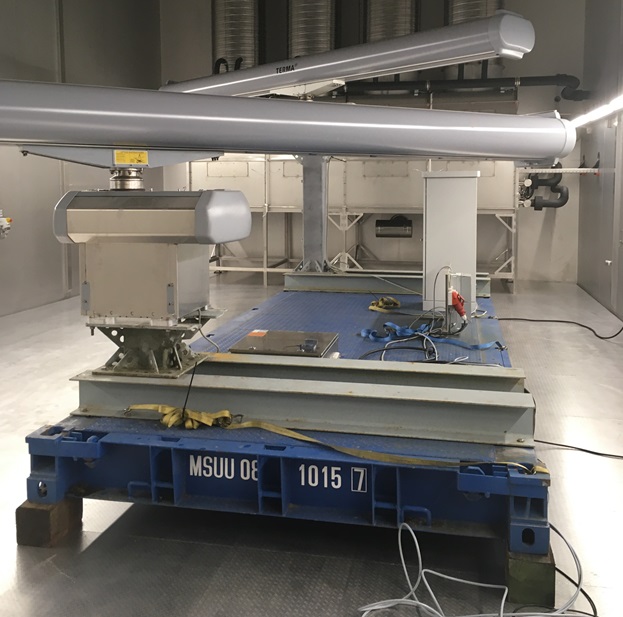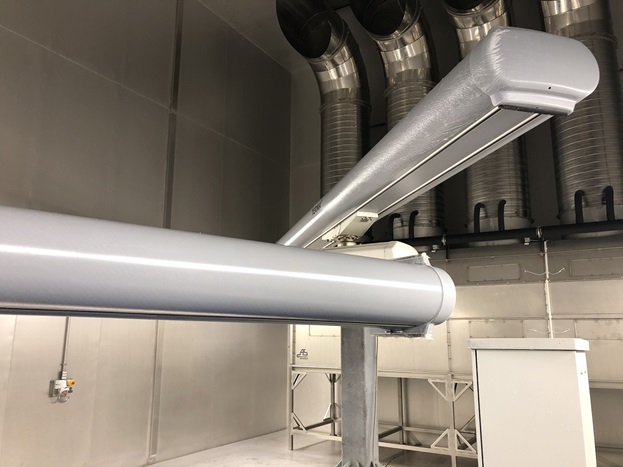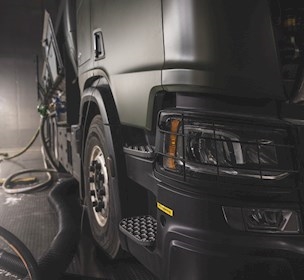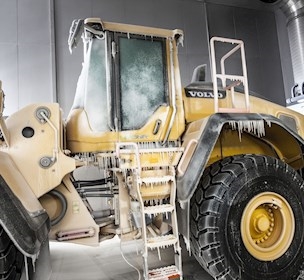Radar antenna from Terma went in the freezer
A system that prevents ice from forming on radar antennas passed the test in FORCE Technology’s large climate chamber on Lindø where the temperature dropped down to -35 degrees.
Ice on the antenna spells danger
At an airport, surveillance and monitoring of the traffic on the ground and in the air are strictly necessary for safety reasons and to avoid delays. For this purpose, radar systems are used which can be physically distinguished by the rotating radar antennas installed on top of buildings or in towers. Terma, the global technology company with its head office in Aarhus, is a leading producer of this type of antenna.
The possible accumulation of ice on the radar antenna in sub-zero weather, also known as freezing rain, is a challenge. Freezing rain affects the radar performance, but, more seriously, there is a risk of bodily injury and damage to vehicles if ice falls from large heights.
Actually, it is not only airports that have problems with iced over radar antennas. Terma’s radar antennas also rotate in, for example, wind farms and even in the Canadian wilderness.

Enlarged electric side-view mirrors melt the ice
Terma has developed a solution to counteract the problem with ice formation in the form of a so-called anti-icing system which melts the ice.
”It works a bit like the heating elements in side-view mirrors on cars”, says Ulrik Steen Terp Hansen, Technical Product Responsible at Terma. ”By means of a large heating mat on the radar antenna, we can ensure that the surface is constantly kept above 0 degrees”.
Terma has produced radar systems for more than 60 years, and it is the only producer in the world to deliver this type of solution for the ice problem.
Terma tested for two days.
To ensure that the system worked - not just on paper but also in practice - Terma had to find a co-operation partner that was able to test the seven- meter radar antenna. FORCE Technology turned out to be the only potential partner in Denmark with ”such a large freezer”, as Ulrik Steen Terp Hansen puts it.
Terma had to find out partly whether the anti-icing system was capable of effectively preventing the accumulation of ice on the surface of the radar antenna and partly whether the system was fully operative down to -35.
At the same time, Terma was pressed for time. ”We were in a hurry to complete the test before Christmas so that we could proceed with having the product certified. It was therefore also of great value to us that FORCE Technology was able to find the time at very short notice”, says Ulrik Steen Terp Hansen.

Terma had the anti-icing system tested in the climate chamber on Lindø, which FORCE Technology operates together with Lindø Offshore Renewable Centre (LORC). Terma wanted a comparative test of two radar antennas - one with the new anti-icing system and one without.
The two antennas were placed on the same test platform, and the test was up and running in less than an hour since the entire test set-up could be transported through the wide gate together. The temperature in the climate chamber was set at -9 degrees, and the person in charge of the test from FORCE Technology now sprayed water over both radar antennas while they were rotating. In the next phase of the test, temperature was turned all the way down to - 35 degrees.
Cool result brought ice-free radar antenna close to launch
The thorough test in the climate chamber showed that the radar antenna worked almost exactly as it should, and Terma only needed to make very minor adjustments after the test.
The company could thus proceed to the certification process and expects to install the first ice-free radar antennas this summer.
The climate chamber at Lindø has recently been upgraded so that the customers can now test at temperatures all the way down to -60 degrees.



